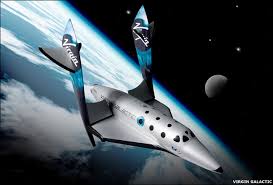Galactic Space Adventures
Home Page

Article by Los Angeles Times
Within the next decade, the stereotypical space traveler may no longer be a square-jawed fighter pilot but a wealthy Internet geek with deep pockets.
Or at least that's what a crop of gutsy space entrepreneurs hope.
For half a century, venturing into space has been the primary domain of governments that can afford to spend billions of dollars to develop and send massive rockets into orbit. But modern-day industrialists believe a privately funded commercial space industry is poised to blast off.
With technological advances that they say will make rocketry more affordable, companies are popping up nationwide and focusing on an array of ventures, from lifting "space tourists" briefly into orbit to launching satellites and cargo far into space.
"It's a pivotal time in human evolution," said Peter H. Diamandis, chief executive of the X Prize Foundation, a nonprofit group that sponsored a $10-million competition to develop a private manned rocket. "Within the next few years, companies will open space to the masses, as opposed to the few. With that change brings a tectonic shift in the way we as human beings live."
In 2004, a team led by Burt Rutan, a maverick Mojave Desert aerospace engineer, won the $10-million purse by sending a test pilot to the edge of space, where humans can feel weightlessness.
The private space race was officially on.
Diamandis takes pride in starting the mad dash. After all, it was his goal. He knew people weren't going to invest in private space unless there was an incentive.
That's when he thought of the Spirit of St. Louis.
"People don't remember this, but the Spirit of St. Louis came as a result of a contest," Diamandis said of the airplane in which Charles Lindbergh made the first nonstop flight between New York and Paris. The 1927 feat won Lindbergh a $25,000 prize. "That's what we needed in our industry."
Diamandis, a physician by trade, is like many in the private space field. He's a baby boomer with a zeal for science fiction and a lifelong desire to be an astronaut. The walls of his Playa Vista office are cluttered with photos and memorabilia. Star Trek trinkets are stacked high, along with Yoda toys and Buzz Aldrin-inspired G.I. Joe action figures.
"I grew up in an era when flights into space were routine," he said. "We've lost that over the years. And that's why we need individuals to step in."
Aiming high
Rutan's prizewinning spacecraft, SpaceShipOne, caught the eye of British billionaire Richard Branson, founder of Virgin Atlantic Airways.
Known as a maverick himself, Branson wanted to work with Rutan on a much bigger rocket that could send not only a pilot into space but fare-paying passengers as well. Rutan began working on the project in the Mojave Desert with his company, Scaled Composites.
The enterprise was shrouded in secrecy for years. Then in 2007, during a test of the spaceship's propulsion system, an explosion killed three workers and injured three others.
The blast uncovered the secret project and cast a glaring light on the inherent risks of rocketry. Rocket development, even backed with government resources and financing, has been fraught with disappointments.
Despite the accident, Branson and Rutan continued the project. Last month they unveiled their new rocket, dubbed SpaceShipTwo, and its carrier aircraft, VMS Eve, at an airport in the Mojave Desert.
Rutan had come up with a novel idea: Instead of trying to launch a rocket directly into space, the carrier craft, which resembles a flying catamaran, would lift SpaceShipTwo to an altitude of 50,000 feet. At that point, SpaceShipTwo -- carrying six paying passengers and two pilots -- would separate and blast off to about 325,000 feet, or 60 miles, above the Earth's surface.
At that suborbital altitude, passengers experience weightlessness and see the curvature of the Earth. The price for the experience: $200,000.
